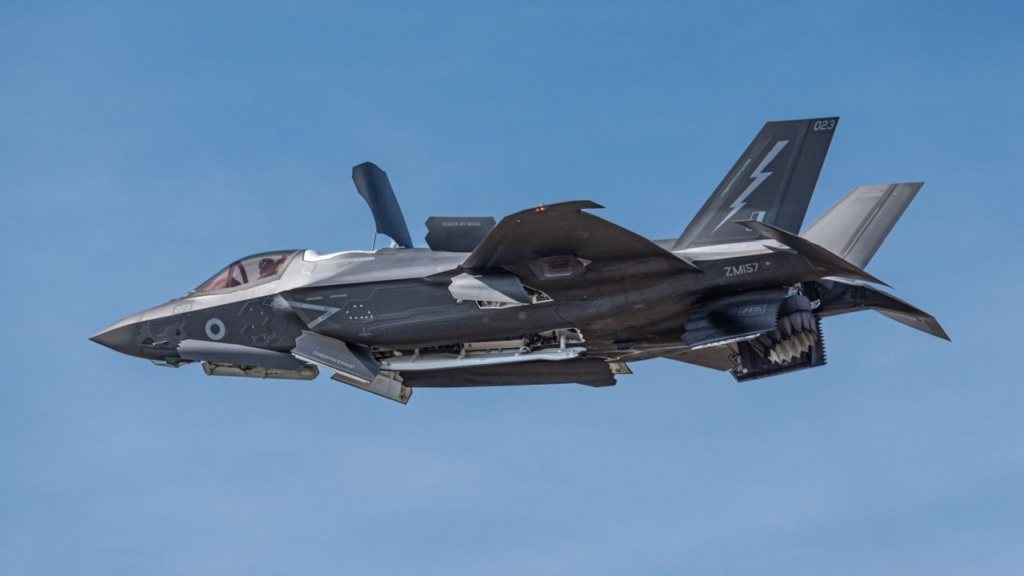The F-35 Lightning II is the most advanced and capable fighter jet in the United States Air Force (USAF) (with the possible exception of the F-22 Raptor), as well as the linchpin of the air power strategy of multiple North Atlantic Treaty Organization (NATO) allies. Multiple US allies across the globe have been quick to point to the aircraft’s impressive success, especially in the recent conflict in the Middle East.
As a result, demand for the aircraft, both from the United States and abroad, has led to a steady flow of revenue for US-based defense contractors. ![]() RTX Corporation (NYSE: RTX), which builds the engines for the advanced fighter, has been one of the biggest beneficiaries of this demand. Earlier today, Reuters reported that RTX had announced a new $2.9 billion order for the F-35’s engines for its engine-building subsidiary, Pratt & Whitney. Let’s take a deeper look at this deal and everything it means for one of America’s largest aerospace companies.
RTX Corporation (NYSE: RTX), which builds the engines for the advanced fighter, has been one of the biggest beneficiaries of this demand. Earlier today, Reuters reported that RTX had announced a new $2.9 billion order for the F-35’s engines for its engine-building subsidiary, Pratt & Whitney. Let’s take a deeper look at this deal and everything it means for one of America’s largest aerospace companies.
The Contract Was Awarded By The Navy
The United States Navy has awarded a $2.9 billion contract to Pratt & Whitney, with the order officially including 141 F135 engines for the F-35 Lightning II aircraft. These engines will support F-35s that are in service with the United States Navy, Air Force, Marine Corps, and multiple allied nations, with deliveries to take place through February 2028. The funding for this order is divided, with around $1.27 billion attributed to the Navy and Air Force, while foreign partner nation sales will add around $750 million in further funding.
This deal today was obviously a further victory for RTX, as Pratt & Whitney continues to cement itself as a key player in the procurement pipeline for the world’s most advanced fighter jet. Alongside this contract, US aerospace manufacturer Boeing today also secured a key order for $315 million for F/A-18 landing gear repairs, while Lockheed Martin received a smaller award for $27 million for maintenance procedures.
What Are The Financial Implications Of This Deal?
For investors, this $2.9 billion award provides multi-year revenue flexibility for RTX’s key engine-manufacturing segment. The company’s footprint includes manufacturing facilities across Connecticut, Indiana, Washington, and Maine, which will continue to enjoy higher capacity utilization.
The F135 engine remains the exclusive powerplant for the F-35, meaning that recurring sales of the jet could lead to future contracts for both the powerful and versatile engine. Upgrade programs are set to see Pratt & Whitney continuing to capture incremental revenue streams beyond just individual deliveries, and this order demonstrates the Pentagon’s continued confidence in the manufacturer.
The F135 has faced some scrutiny due to high production and development costs. However, RTX investors can now see this deal as a continued demonstration of the Pentagon’s faith in the platform and the management team at Pratt & Whitney, which is guiding its development.
How Did Equity Markets Respond To The Deal?
Investor confidence in Pratt & Whitney’s parent company, RTX, certainly emerged today in equity markets. RTX Corporation shares rallied around 2.1% during Tuesday trading, with the bulk of the rally taking place earlier in the morning, around the time that the deal was announced.
The announcement of this order follows a second-quarter earnings report where RTX outperformed expectations, with margin expansion being observed in a number of key market segments. Investors today can have confidence that the revenue coming in from this new order will flow through to profits and earnings over the next year, leading to increased valuations.
According to TradingView, RTX has seen modest multiple expansion since the start of July, with the security’s price-to-earnings ratio rising from around 32 at the start of July to around 35 today. Year-to-date, investors holding RTX shares have been able to realize total returns of more than 37%. The company’s prospects do remain strong, and many investors might expect earnings upgrades to follow the announcement of this latest order.






